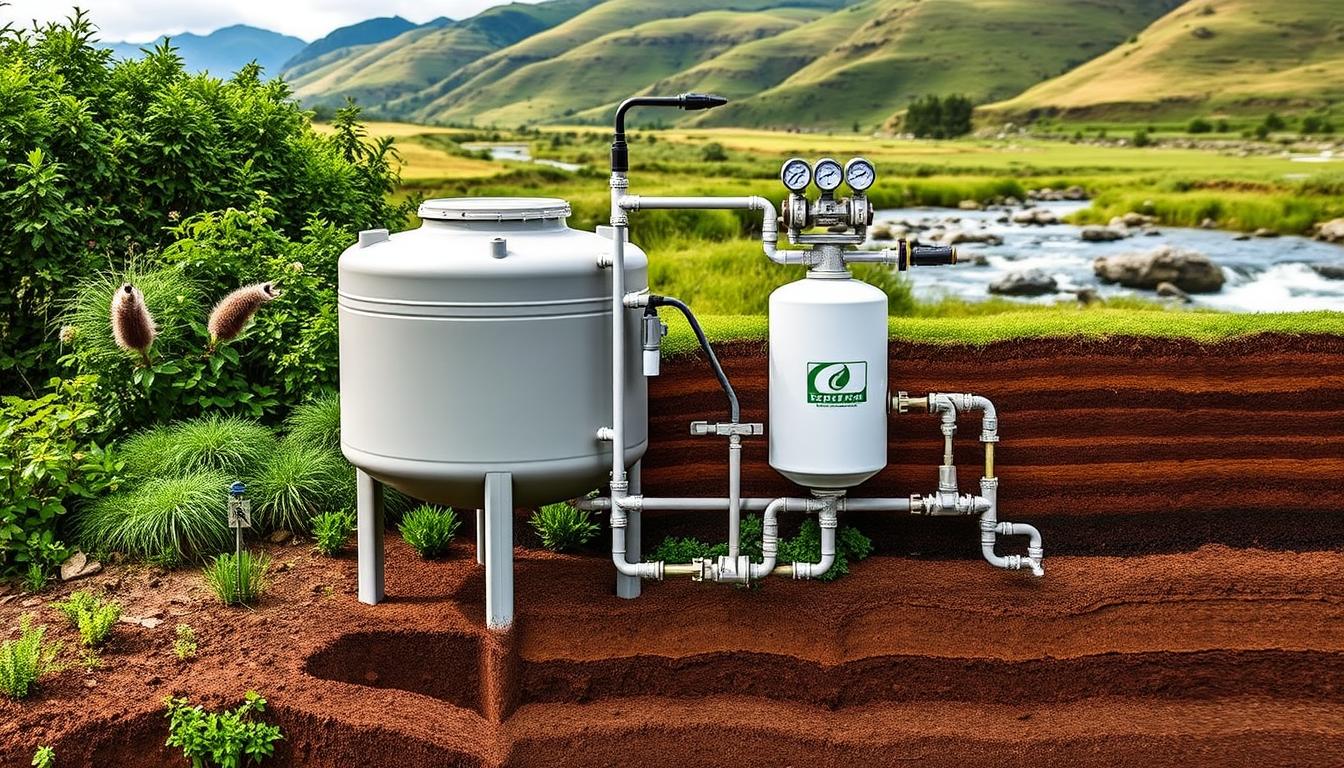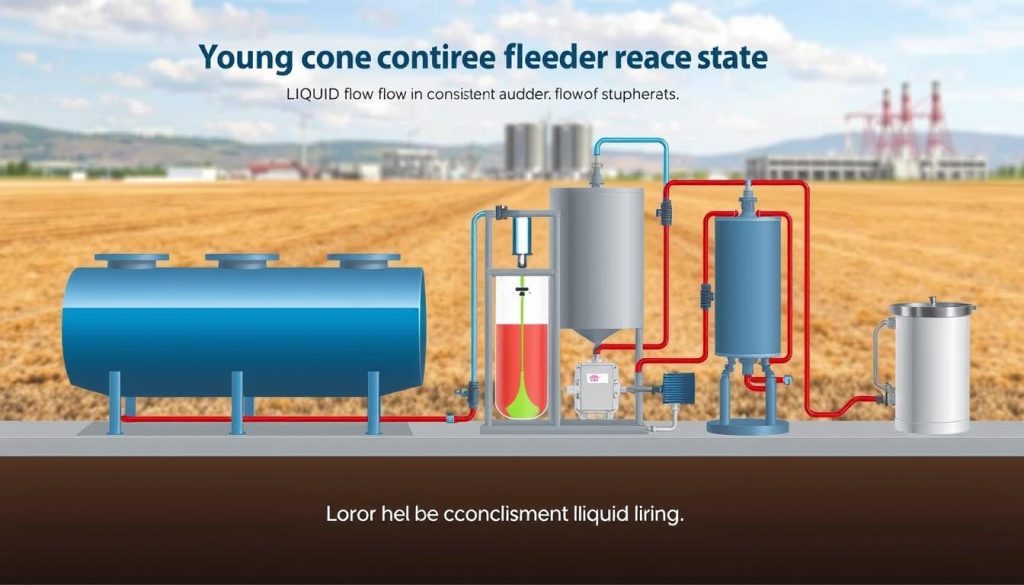
Automatic chemical feeders in pools and spas can be controlled by electrical timers or erosion feeders. Erosion chemical feeders are vital for maintaining optimal water quality and safety in various applications.
Erosion chemical feeders are key components in chemical feed systems. They deliver specific chemicals like disinfectants or pH adjusters to water in a controlled way. These feeders work by allowing water to flow through a chamber with solid chemical tablets.
The chemical release rate is regulated by adjusting water flow through the feeder. This makes them ideal for solid chemical formulations. They offer a simple, reliable method of chemical dosing in various water treatment applications.
Let’s explore the types, functions, and advantages of erosion chemical feeders over other systems. You’ll gain a thorough understanding of how these essential water treatment equipment work. We’ll also discuss why they’re crucial for well-maintained pools and spas.
Understanding Erosion Chemical Feeders

Erosion chemical feeders are key in water treatment systems. They ensure steady chemical dosing. These devices use erosion to dissolve solid chemical tablets into water flow.
This process keeps the right chemical level in treated water. Let’s explore how erosion feeders work and their benefits in water treatment.
Definition and Basic Principles
An erosion chemical feeder holds solid chemical tablets in a chamber. Water flows through, slowly eroding the chemicals. The dissolution rate depends on water flow, tablet surface area, and chemical solubility.
Operators can adjust these factors to control the chemical release rate. This helps maintain the right concentration in treated water.
Advantages of Erosion Feeders
Erosion chemical feeders have many benefits for water treatment:
- Low maintenance: Their simple design reduces operational costs and downtime.
- Consistent dosing: Solid tablets release chemicals steadily over time, ensuring consistent treatment.
- Easy installation: These feeders easily fit into existing water treatment systems.
- Reliable operation: With few moving parts, they’re less likely to fail or dose incorrectly.
Erosion feeders are a reliable and efficient solution for water treatment needs, offering consistent chemical dosing with minimal maintenance requirements.
Several key factors affect erosion chemical feeders’ effectiveness. The table below summarizes these:
| Factor | Impact on Erosion Feeder Performance |
|---|---|
| Chemical solubility | Higher solubility leads to faster dissolution and chemical release |
| Water flow rate | Increased flow rate accelerates chemical erosion and dosing |
| Tablet surface area | Larger surface area exposed to water enhances dissolution rate |
| Water temperature | Higher temperatures generally increase chemical solubility and release |
Understanding these principles helps water treatment pros improve their systems. They can achieve consistent, reliable, and low-maintenance chemical dosing.
Key Components of an Erosion Chemical Feeder System
An erosion chemical feeder system has several essential parts. These include the feeder, chemicals, and controllers. Understanding each component helps pool operators maintain a healthy swimming environment.
The system ensures safe delivery of water treatment chemicals. It optimizes water treatment processes for a well-balanced pool.
Chemical Compatibility and Selection
Choosing the right chemicals for erosion feeders is crucial. They must be compatible with the feeder design and application.
Water treatment chemicals should be EPA-registered and NSF/ANSI/CAN certified. This ensures they’re safe for use in recreational water facilities.
The chemical formulation must suit erosion feeders. Factors like tablet composition and erosion rate affect feeder performance.
Feeder Design and Certification
Erosion chemical feeders should meet industry standards like NSF/ANSI/CAN 50. This certification ensures rigorous testing for performance, durability, and safety.
Choose a feeder designed for your specific chemical and pool size. Certified feeders include safety features to prevent chemical overdosing.
| Feeder Model | Tablet Capacity | Pool Size |
|---|---|---|
| Hayward CL-200 (in-line) | 9 lbs | Up to 40,000 gallons |
| Sani-King Perform-Max 920 (in-line) | 7 lbs | Various |
| Pentair Rainbow Model 320 (in-line) | 5 lbs (3″ tablets) | Various |
| Hayward CL-220 (off-line) | 9 lbs | Various |
| Pentair Rainbow Model 300 (off-line) | 5 lbs, 9 lbs, or 13 lbs | Various |
| Pentair HC3315 (off-line, high capacity) | 15 lbs | Larger pools |
| Pentair HC3330 (off-line, high capacity) | 30 lbs | Larger pools |
Controllers and Automation
Advanced erosion chemical feeder systems often use controllers and automation. These optimize performance and reduce operator intervention.
Controllers monitor water parameters like pH and ORP. They adjust water flow through the feeder to maintain desired chemical levels.
Automation systems reduce daily workload for pool operators. They keep water chemistry consistent, allowing staff to focus on other tasks.
Using compatible, certified chemicals, generators, and controllers ensures that the chemical feed system functions safely and effectively, providing a healthy and enjoyable swimming environment for all.
An Erosion Chemical Feeder is What Type of Feeder?
Erosion chemical feeders are solid chemical dosing systems. They handle tablet, briquette, and calcium hypochlorite feeders. These feeders gradually release active ingredients into the water stream as tablets or briquettes erode.
This controlled release makes erosion feeders ideal for long-term chemical dosing. They require few adjustments or replenishments, making them efficient and low-maintenance.
Solid Chemical Feeders
Erosion chemical feeders handle dry chemicals in granular or tablet form. Common solid chemicals include chlorine tablets, bromine tablets, chlorine briquettes, and mineral sanitizers.
Solid chemicals offer a more stable release rate than liquid feeders. This stability ensures consistent water quality and reduces the need for frequent monitoring.
- Chlorine tablets (trichlor or calcium hypochlorite)
- Bromine tablets
- Chlorine briquettes
- Mineral sanitizers
Fully Automated Operation
Erosion chemical feeders operate automatically with minimal intervention. Once installed and configured, they maintain consistent chemical dosing for long periods. This “set-and-forget” feature makes them low-maintenance and cost-effective.
Automated operation of erosion feeders offers several benefits. It ensures consistent water quality and reduces labor costs. It also minimizes the risk of human error in chemical handling.
- Consistent water quality: Automated dosing adds the right amount of chemicals, maintaining optimal water quality.
- Reduced labor costs: Minimal operator intervention significantly reduces costs associated with manual chemical handling.
- Minimized risk of human error: Automated systems eliminate potential errors in manual chemical handling and dosing.
Erosion feeders are ideal for various water treatment applications. They work well in swimming pools, spas, industrial cooling towers, and wastewater treatment facilities.
Conclusion
Erosion chemical feeders offer a reliable water treatment solution. They provide consistent chemical dosing and easy maintenance. These feeders use erosion to release solid chemicals into water streams gradually.
These feeders work with various solid chemical formulations. This makes them versatile for many water treatment applications. Their low-maintenance design and automated controllers simplify operation.
When choosing an erosion chemical feeder, consider specific application needs. Chemical compatibility, feeder capacity, and certification standards are also important. A well-designed feeder ensures safe operation and optimal performance.
Erosion chemical feeders are a top choice for water treatment professionals. They offer efficient and effective chemical dosing solutions. Their reliable performance and ease of use make them stand out.







